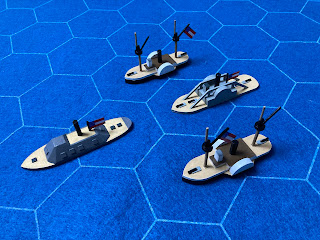“One game to bring them in….and in the expansion, bind them!” The 1st edition base game and the Battles of the Third Age expansion
Some time ago I acquired a copy of the War of the Ring, at that time published by Fantasy Flight Games and the first edition. The game is now produced by Ares and is the second edition. It is a sprawling strategic campaign game set against the backdrop of the Lord of the Rings in the good guys have to unite in order to by time to beat the bad guys whilst the Fellowship makes it way to Mordor to destroy the ring. It is features cards for various actions within the game and best of all, nigh on 300 Bob Naismith designed figures representing the key characters and armies. In the first edition these have been moulded in a hard polythene, unlike the second edition which uses the same figures but moulded in a softer, more oily polythene.
Apologies for the poor quality of the pictures but these are taken from the rule book. Above you see the good guys whilst below are the forces of evil
Sadly the Battles of the Third Age does not include such a page but does see the addition of models representing Rohan captains (Theoden, Theodred and Eomer), Gondor captains (Faramir and Imrahil), Black Uruks, Southron horsemen, the Witch King, Corsair ships, Treebeard and the Ents, Half-orcs, Dunlendings, Galadriel, the Balrog and a dozen siege machines, six for each side - Towers for the forces of evil and Trebuchets for the bad guys. I will get some close ups of the figures in my next post.
Needless to say it was the figures that originally clinched it for me. The foot figures are roughly 25mm, the mounted slightly smaller, say around 20mm-ish. The Ents are around 35mm tall whilst the siege machines and Corsair ships do not really fit in with the figures at all as they are too small.
I had a plan about painting the figures (many owners of the game have done so) and using them for such things as HOTT, Dragon Rampant or even low level skirmishes. A bold plan given my aversion to painting but these figures would suit even my old-fashioned and amateurish painting style. They have nicely exaggerated detail that lends itself well to shading and highlighting and, to be frank, older eyesight!
To cut a long story short, an opportunity arose to acquire the only expansion that was available for the first edition - elements of which found their way into the second but not all. It was a little on the expensive side but in the interests of completeness I grabbed it and was hugely pleased that I did.
Battles of the Third Age is really two expansions in one as it expands the original game as well as providing two standalone battles - the Battle for Rohan and the Battle for Gondor. These two are effectively ‘games within a game’ and are a perfect way to get into the heat of the action quickly. As I recall the Lord of the Rings version of Risk had a similar idea with the expansion that included additional figures and a game based on the battle of Minas Tirith.
What does this all mean then?
Well, I still like the idea of using the figures outside of the original game but obviously, there would be shedload of painting to undertake first. Call it a long term slow burner then, unless something profound happens in the meantime!
Which of course it has….
The latest offering from Two Fat Lardies - and hugely impressive these rules look as well!
The rear cover
These will need more figures than for HOTT or Dragon Rampant but not excessively so in my opinion. I reckon that given the range of models available from the two War of the Ring sets I could easily raise a couple of forces that would be usable in a Tolkien/Peter Jackson style setting.
Oh well, another project to add to the list but, and it is a significant but, I have everything I need to complete it in terms of figures.
Meanwhile though, back to the ships (and not the Corsairs of Umbar!).


















































